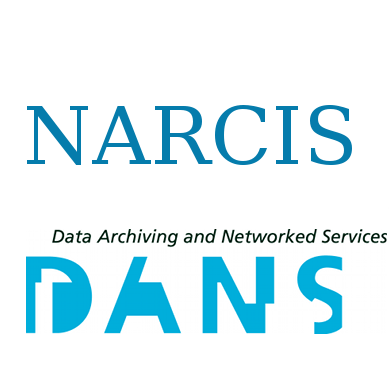Focal point
Location
National Academic Research and Collaborations Information System (NARCIS) is the main Dutch national portal for those looking for information about researchers and their work. NARCIS aggregates data from around 30 institutional repositories. Besides researchers, NARCIS is also used by students, journalists and people working in educational and government institutions as well as the business sector.
NARCIS provides access to scientific information, including (open access) publications from the repositories of all the Dutch universities, KNAW, NWO and a number of research institutes, datasets from some data archives as well as descriptions of research projects, researchers and research institutes.
This means that NARCIS cannot be used as an entry point to access complete overviews of publications of researchers (yet). However, there are more institutions that make all their scientific publications accessible via NARCIS. By doing so, it will become possible to create much more complete publication lists of researchers.
In 2004, the development of NARCIS started as a cooperation project of KNAW Research Information, NWO, VSNU and METIS, as part of the development of services within the DARE programme of SURFfoundation. This project resulted in the NARCIS portal, in which the DAREnet service was incorporated in January 2007. NARCIS has been part of DANS since 2011.
DANS - Data Archiving and Networked Services - is the Netherlands Institute for permanent access to digital research resources. DANS encourages researchers to make their digital research data and related outputs Findable, Accessible, Interoperable and Reusable.
Members:
Resources
Displaying 681 - 685 of 1863LOP's in de gemeentelijke praktijk : een beknopte analyse naar de doorwerking van LOP's in 30 gemeenten
De regeling ter subsidiëring van Landschapsontwikkelingsplannen (LOP's) wordt herzien. Eén van de door LNV gewenste verbeterpunten – op basis van een uitgevoerde evaluatie - voor het functioneren van LOP's is een betere inbedding in de lokale planvorming. Onduidelijk voor LNV is hoe de afgelopen 10 jaar de LOP's zijn ingebed in bestemmingsplannen of andere lokale en/of gemeentelijke plannen. Elementair inzicht hierin is belangrijk voor een effectieve herziening van de subsidieregeling.
European blues : blue services in a European perspective
Land owners who offer blue services make their land available for activities such as water conservation, peak-flow storage or the containment of the rise of the groundwater level, and receive payments that exceed the compensation for incurred costs. The Netherlands is a pioneer in the concept of blue services, but other European countries may also offer possibilities for such activities. There are a number of institutional factors that either hamper or stimulate the realisation of blue services.
Multifunctionele Landbouw en Landschap : onderzoek naar de invloed van multifunctionele landbouw op het landschap, nu en in de toekomst
Een verkennend onderzoek naar de ruimtelijke impact van multifunctionele landbouw (MFL) op het landschap. De analyse richt zich op de fysieke veranderingen in het landschap als gevolg van MFL en de factoren achter de ontwikkeling van MFL. De sturende factoren zijn te verdelen in omgevingsfactoren, ondernemersfactoren en overheidsfactoren. Het onderzoek behelst een literatuurstudie, een regionale analyse en aan de hand van interviews en veldbezoeken zijn 4 casestudie gebieden onder de loep genomen. Dit zijn: Gelderse vallei, Walcheren, Bellingwolde en Waterland.
Het brede beekdal als klimaatbestendige buffer in de veranderende leefomgeving : flexibele toepassing van het 5B-concept in Peel en Maasvallei
Noord- en Midden-Limburg kennen een ontginningsgeschiedenis waarbij de eisen van landbouwkundig gebruik voorop hebben gestaan. Afvoer van overtollig water stond centraal. De natuurlijke beken zijn daarbij niet gespaard. Ook die moesten worden gekanaliseerd om aan de afvoernorm te voldoen. De samenleving stelt nu andere eisen aan de leefomgeving en dus ook aan het grondgebruik. Ruimtelijke ordeningsplannen met hernieuwde functietoekenning en daarop afgestemde herinrichtingprojecten zijn aan de orde van de dag. Meanderende beken terug in het landschap zijn het resultaat.
Geographical dimensions of risk management : the contribution of spatial planning and Geo-ICT to risk reduction
Geographical information systems can offer insights into the possibilities for emergency response and the possibilities for self help during a disaster, such as a flooding or explosions. Based on this information, proposed housing areas can be adapted. The building site can be elevated or ‘safe havens’ for shelter can be created. Nevertheless, such information was hardly taken into consideration in local spatial planning practices, especially with respect to flood risks. Local governments did not feel themselves responsible for the reduction of potential flood consequences.


